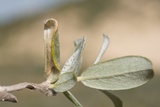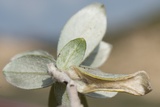Phyllonorycter quinqueguttella (Stainton, 1851) Species
Last modified: Nov. 26, 2024, 2:12 p.m.
A local and rare species in Belgium, thus far (2020) only recorded from Flanders.
Details
- Classification
- Family: Gracillariidae > Subfamily: Lithocolletinae > Genus: Phyllonorycter > Species: Phyllonorycter quinqueguttella
- Vernacular names
- Kruipwilgvouwmot (NL), Sandhill midget (EN), Kriechweiden-Faltenminierer (DE)
- First mention in Belgium
- Anonymous 1901. Varia. — Revue mensuelle de la Société entomologique namuroise 1: 36, 44, 48, 55, 60. On page 36.
- Status
-
Native
Distribution
Imago
A small species; head brown with some mixed white hairs; forewing ground colour brown; white pattern consisting of a basal line, completely edged with dark brown scales; a patch of white scales at the dorsum near the base; four large costal and three large dorsal, triangular striae, all edged basally with dark brown, almost black scales; a black spot in the apical area.
Museum specimens
No pictures yet!Specimens in nature
No pictures yet!Caterpillar
Yellowish to yellow with a light brown head.
Mine
A tentiform mine on the underside of a leaf; in smaller leaves, the mine occupies the whole leaf area. Underside with some fine longitudinal folds. The upperside of the mine is yellowish. The later instars apply spinning in the mine so that the leaf contracts into a tube-like structure. The black frass is concentrated in one corner of the mine.
See also gracillariidae.net and bladmineerders.be.
Cocoon/pupa
Not a real cocoon but a flimsy spinning in the opposite corner of the mine from where the frass is stored.
Bionomics
The species hibernates in the pupal stage, inside the mine among leaf litter on the ground. After the emergence of the adult, the pupal skin protrudes through the mine.
Flight periods
The adults fly in two generations a year during May and August.
Observed on
- Host plant (species):
- Salix repens
The species is monophagous on Salix repens.
Habitat
Sandy, xerothermic habitats where the larval host plant grows.



